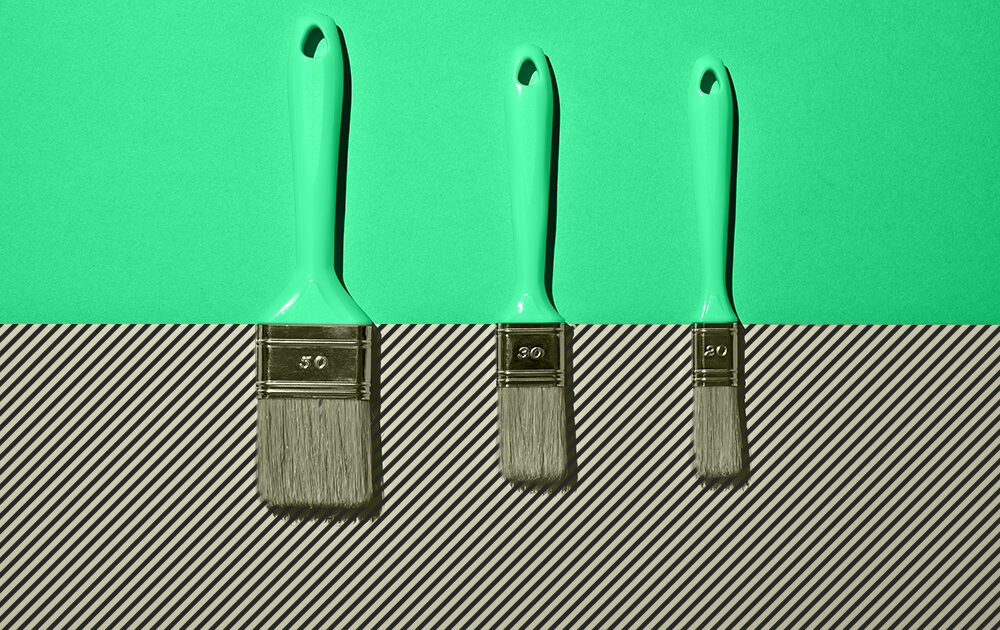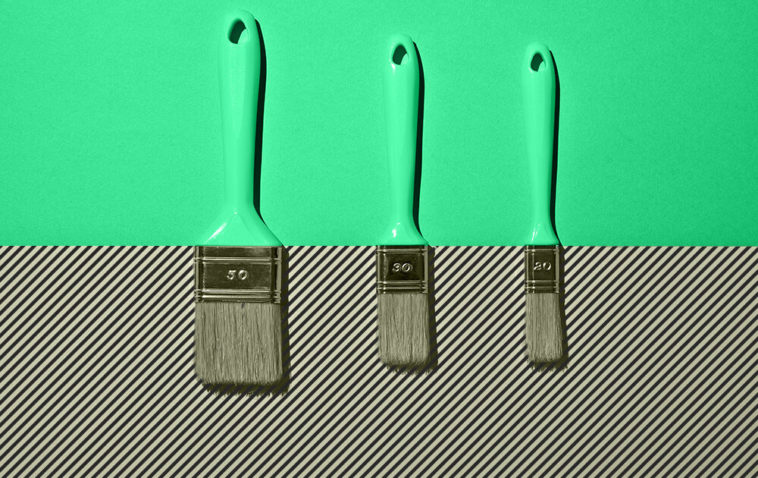How to Pay for Home Improvements

If you’re thinking about renovating your home, it’s not just an opportunity to give the place a new look — it’s a chance to increase resale value, too.
If you have enough money saved, you can tap into those savings to pay for home improvements. But waiting until you have cash to renovate isn’t always realistic, or even smart.
That’s where financing options come into play. Many people tap into their home equity, which is simply the difference between their home’s value and what they still owe on their mortgage (assuming the former is higher). You can do this with a home equity line of credit, or HELOC, or a home equity loan. Other options include taking out a home improvement loan or pursuing a cash-out refinance.
“Generally, any option is fruitful as long as the outcome is profitable,” says Sam Kwak, a real estate investor and entrepreneur.
That’s the key part of the equation when borrowing or spending cash to fund home improvements. Will those improvements result in a higher price when it’s time to sell—enough to recoup the investment? Failing to consider that aspect would be a mistake.
“A lot of people tend to upgrade certain aspects of their home without thinking about whether it’ll raise the value of the property,” Kwak says.
5 Ways to Pay for Home Improvements
Before you decide to embark on your home improvement project, find out whether the renovations will increase the value of your property. The process should involve doing some research on comparable home sales in your area and reaching out to professionals, such as real estate agents and/or licensed contractors, to get their opinion on the price of the renovations and whether they will pay for themselves in the long run.
Crunching those numbers will tell you whether going ahead is financially prudent.
If house prices are rising in your neighborhood, that’s good news for you, says Kwak. Rising prices boost your home equity, and the more equity you have in a home, the better, as it can provide a ready source of funds if you want to finance any improvements.
But you have to be selective as to what projects you choose to do. Spending on something is no guarantee that home value will improve, especially when it comes to relatively minor, but still expensive projects.
“Unfortunately, a lot of people add $10,000 to $20,000 into something and the needle barely moves on their value. It’s great to have sentimental value, but purely from a financial perspective, I would say it’s a poor decision to do that,” Kwak says.
There are also repairs that sometimes require immediate attention. An aging HVAC system is a good example of this. If you turn a blind eye to a problem like that, it might turn into a bigger, more expensive problem down the road. If you’re unsure of how urgent a repair is, talk to a licensed contractor or a home inspector.
If you have considered all of the above and are planning to go ahead with your home improvement project, here are five ways to cover the costs.
1. Cash
Using cash is the most straightforward option to pay for home renovations. You will not increase your overall debt and you will not pay fees on a loan, much less interest. If that’s the way you choose, you can begin saving for it by putting yourself on an automated savings schedule, possibly with a high-yield savings account.
Do not deplete your savings to renovate, however, because maintaining a healthy emergency fund is more important.
Cash is the most common method of paying for home improvements, but the use of home equity or other forms of financing rises steadily with the cost of the improvements, according to a 2019 study from Harvard University’s Joint Center for Housing Studies.
People paid with cash for 78% of improvements costing less than $10,000, but only for 60% of those costing $10,000 to $49,999, and for 54% of those costing more than that.
After cash from savings, the most common sources of funding for major home improvement projects are home equity loans or lines of credit and cash-out refinances, data from Harvard University’s Joint Center for Housing Studies shows.
2. Home Equity Line of Credit (HELOCs)
If you can’t or don’t want to pay with cash, a home equity loan or line of credit is generally the most affordable financing option, as long as you qualify. Interest rates will usually be lower since the loan is secured by your home as the collateral, says Kwak.
“I generally recommend a HELOC versus a home equity loan. Most HELOC rates can go between 2-5% these days,” says Kwak.
A HELOC works like a secured credit card, with a revolving line of credit up to a defined maximum. That means you can take what you need, when you need it. Depending on your creditworthiness and the value of your home, a HELOC can be issued for up to 85% of your home’s value.
But a HELOC does come with one major caveat: you must have enough home equity. Before considering a HELOC, compare the value of your home to how much you still owe on your mortgage. Generally, you’ll be eligible if you have at least 20% equity in your home.
You must also have a credit score of at least 620 to qualify, and of at least 720 to get the best interest rates.
“If you invest $20,000 into a new project and you can get $50,000 out of it in terms of home equity value, that’s a smoking hot deal,” says Kwak.
3. Home Equity Loan
Another option to consider is a home equity loan, which many refer to as a second mortgage.
Home equity loans and HELOCs are both based on home equity but operate very differently. With a home equity loan, the amount you’re borrowing is paid out up front in a lump sum, like a personal loan. Your interest rate is fixed, and you have a certain amount of time to repay the loan.
Like a HELOC, this type of loan uses your home as collateral; the lender can repossess it if you default on the loan. The downside to a home equity loan is that you have less payment flexibility than you would with a HELOC. With a home equity loan, you have to take out a big sum all at once; with a HELOC, you can borrow and make payments as you go.
4. Home Improvement Loan
If you don’t qualify for a HELOC or home equity loan, you could apply for a personal loan for home improvements with a bank, credit union, or online lender. It is, however, one of the worst ways to pay for home improvements, says Dan Moralez, a mortgage officer and regional vice president with Northpointe Bank in Michigan.
You don’t need to use your house as collateral in this case, but interest may be higher, since the loan is unsecured. With a home improvement loan, your interest rate and qualification are based on your credit score, and funding comes quickly. These types of loans typically have shorter repayment periods, lower loan amounts, and fewer fees.
“The problem with a personal loan is you’re generally going to pay a higher interest rate and you’re usually going to have an expedited repayment term because there’s no collateral,” says Moralez.
If you’re planning to use a personal loan to finance your renovations, they’re better suited for small to mid-sized projects, such as kitchen appliance upgrades or window replacement.
Pro Tip
Before applying for a home improvement loan, compare home improvement loan lenders. Look out for lenders that offer lower interest rates, competitive fees, and flexible repayment terms.
5. Cash-out Refinance
A cash-out refinance replaces your original mortgage with a new one that’s worth more than you owe on your house, letting you pocket the difference.
You can use those extra funds to pay for your home improvements, but can only do a cash-out refinance if you have enough equity in your home.
If you’re considering refinancing, consider the drawbacks. Because you’re resetting the terms of your mortgage, you’ll have to pay closing costs, such as appraisal, origination fees, and taxes. Keep in mind those costs can be rolled into the loan, so you don’t have to come up with the money up front.
In general, a cash-out refinance is only attractive if you can get a lower interest rate than what you pay now, says Carol Reed, a real estate agent with Realty Group in Minnesota. Interest rates are so low right now that “it’s hard to argue against a cash-out refinance for anybody that has a mortgage loan over 4.0% to 4.5%,” she says.
“If you refinance at the rate we have now, it’s very likely that you can cash out and still end up with a monthly payment similar to what you have now,” says Reed, “and you can use that money to pay for home improvements and boost equity in your house or any other type of investment.”
Published at Wed, 16 Dec 2020 11:30:00 +0000






Comments
Loading…